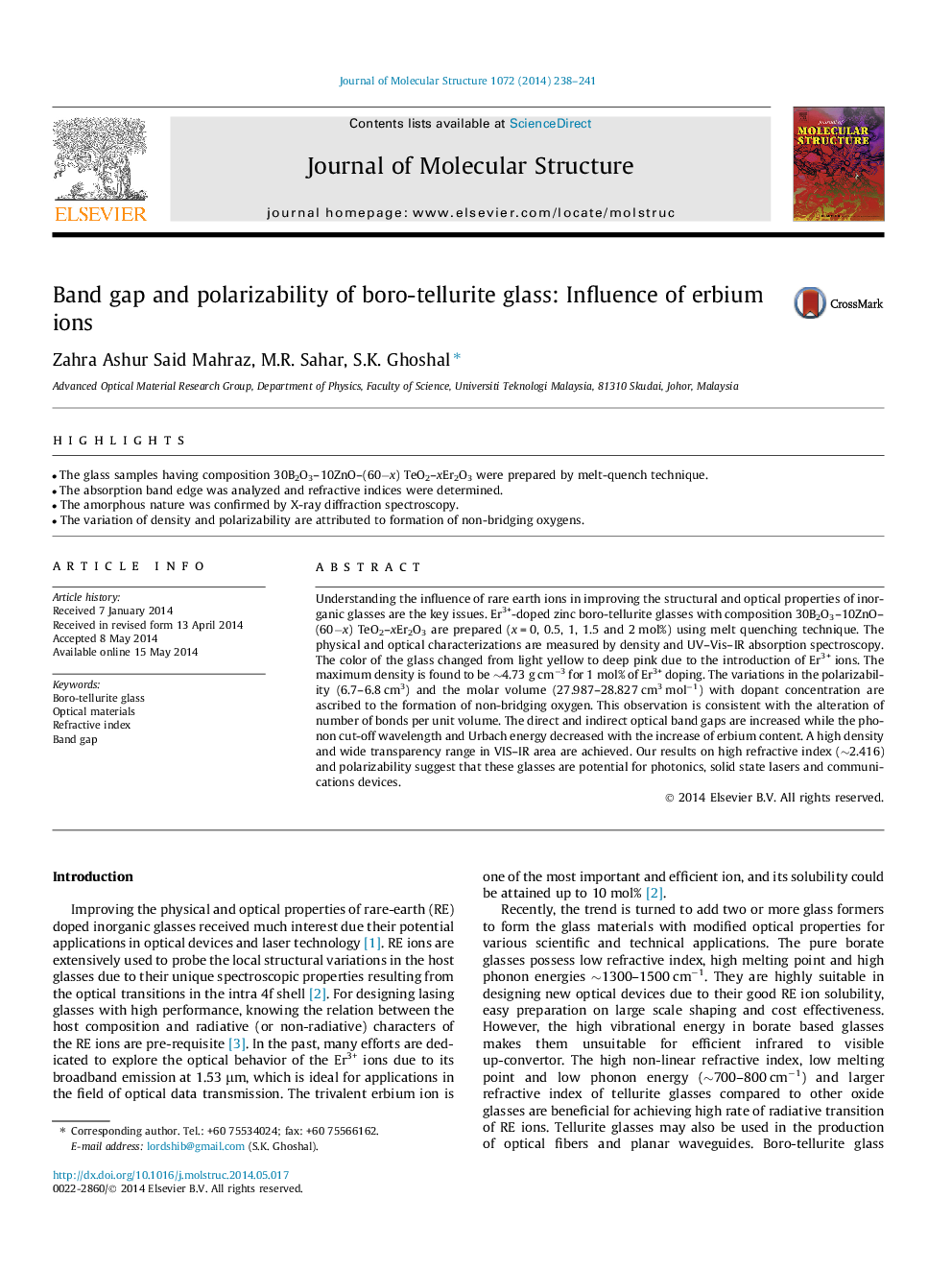| Article ID | Journal | Published Year | Pages | File Type |
|---|---|---|---|---|
| 1405047 | Journal of Molecular Structure | 2014 | 4 Pages |
•The glass samples having composition 30B2O3–10ZnO–(60−x) TeO2–xEr2O3 were prepared by melt-quench technique.•The absorption band edge was analyzed and refractive indices were determined.•The amorphous nature was confirmed by X-ray diffraction spectroscopy.•The variation of density and polarizability are attributed to formation of non-bridging oxygens.
Understanding the influence of rare earth ions in improving the structural and optical properties of inorganic glasses are the key issues. Er3+-doped zinc boro-tellurite glasses with composition 30B2O3–10ZnO–(60−x) TeO2–xEr2O3 are prepared (x = 0, 0.5, 1, 1.5 and 2 mol%) using melt quenching technique. The physical and optical characterizations are measured by density and UV–Vis–IR absorption spectroscopy. The color of the glass changed from light yellow to deep pink due to the introduction of Er3+ ions. The maximum density is found to be ∼4.73 g cm−3 for 1 mol% of Er3+ doping. The variations in the polarizability (6.7–6.8 cm3) and the molar volume (27.987–28.827 cm3 mol−1) with dopant concentration are ascribed to the formation of non-bridging oxygen. This observation is consistent with the alteration of number of bonds per unit volume. The direct and indirect optical band gaps are increased while the phonon cut-off wavelength and Urbach energy decreased with the increase of erbium content. A high density and wide transparency range in VIS–IR area are achieved. Our results on high refractive index (∼2.416) and polarizability suggest that these glasses are potential for photonics, solid state lasers and communications devices.
